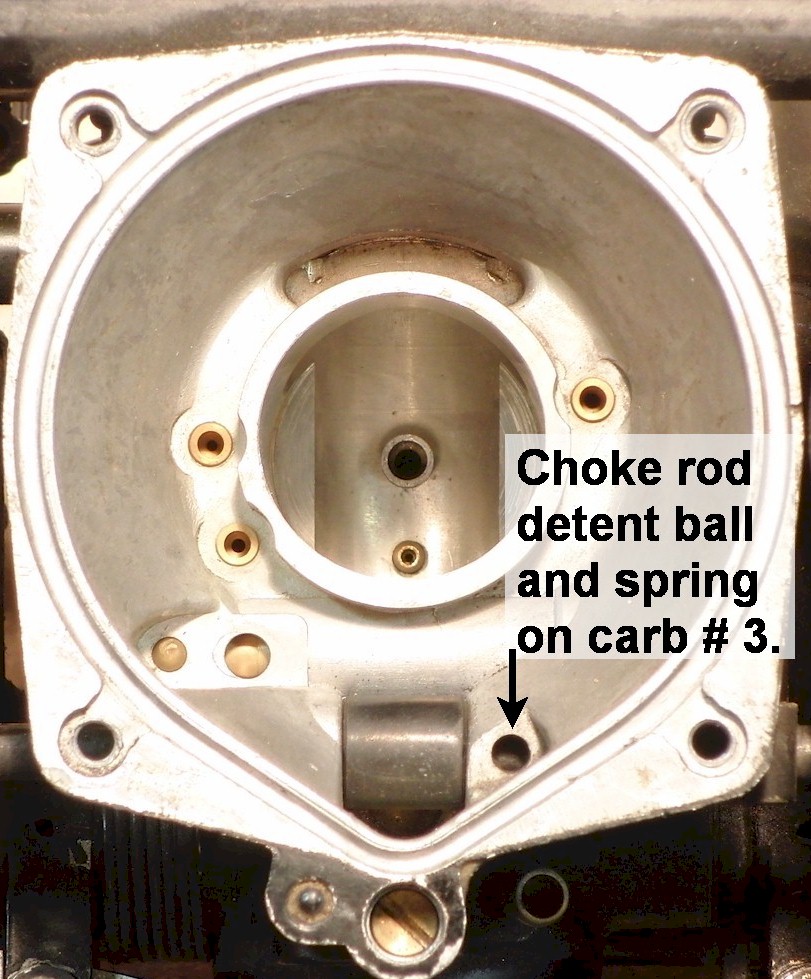On the rack of four TK-26 carbs, each body casting starts out identical to the others. After casting, they are drilled and plugged differently to produce each individual carb.
Each carb will have a fuel rail port on each side. Depending on the location of the carb there will be one drilled port to feed the fuel valve, and the #2 and #3 carb will have a second port to allow fuel to flow to the other carbs in the rack.
There are two bowl vent chambers cast into each body, but only one of them is drilled and can breathe. The other is a dead end. Here is a bowl vent port on the #4 carb.

Here is the vent outlet. There will be a hose here connected to the next carb with a T fitting to the vent hose. The vent hose will just go upward toward the airbox and be left open to the air.

Port 1 is the drain for the bowl. The TK26 carbs do not have an "overflow" circuit. The drain is just a simple open/close drain screw.
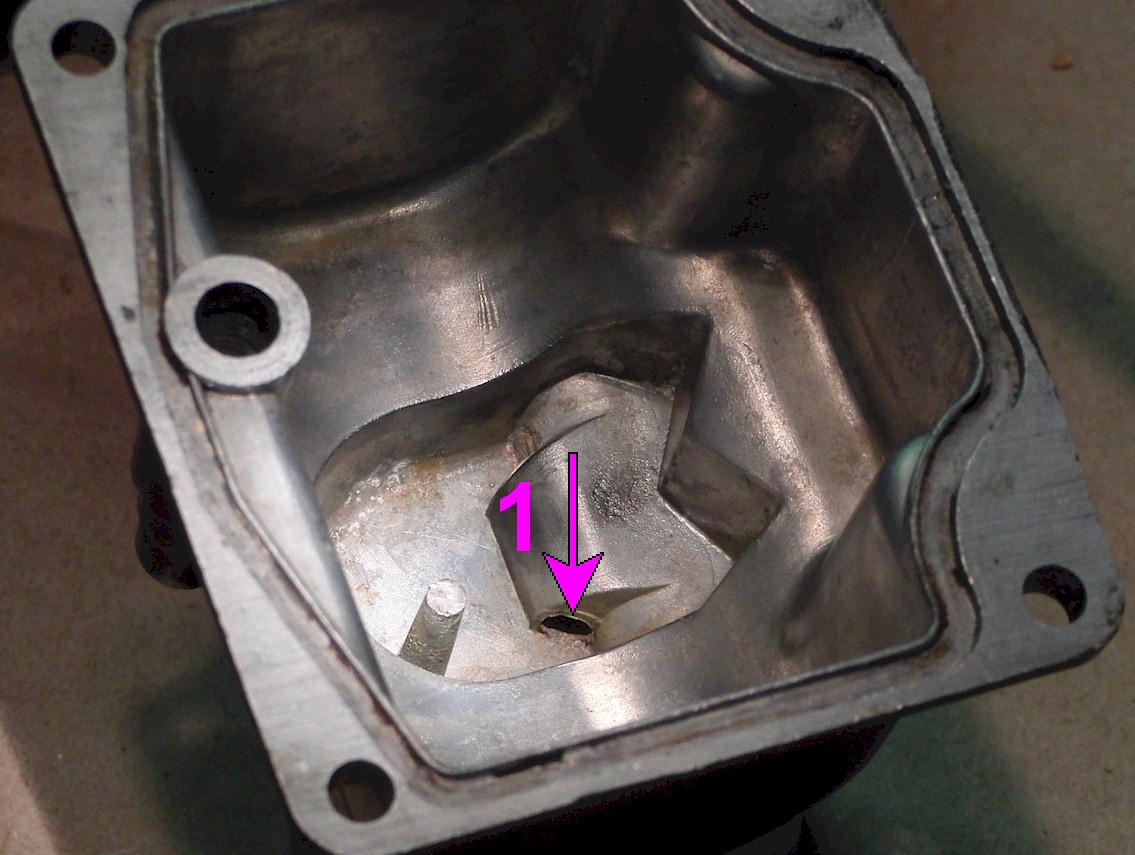

Port 2 is the fuel intake for the enircher jet.
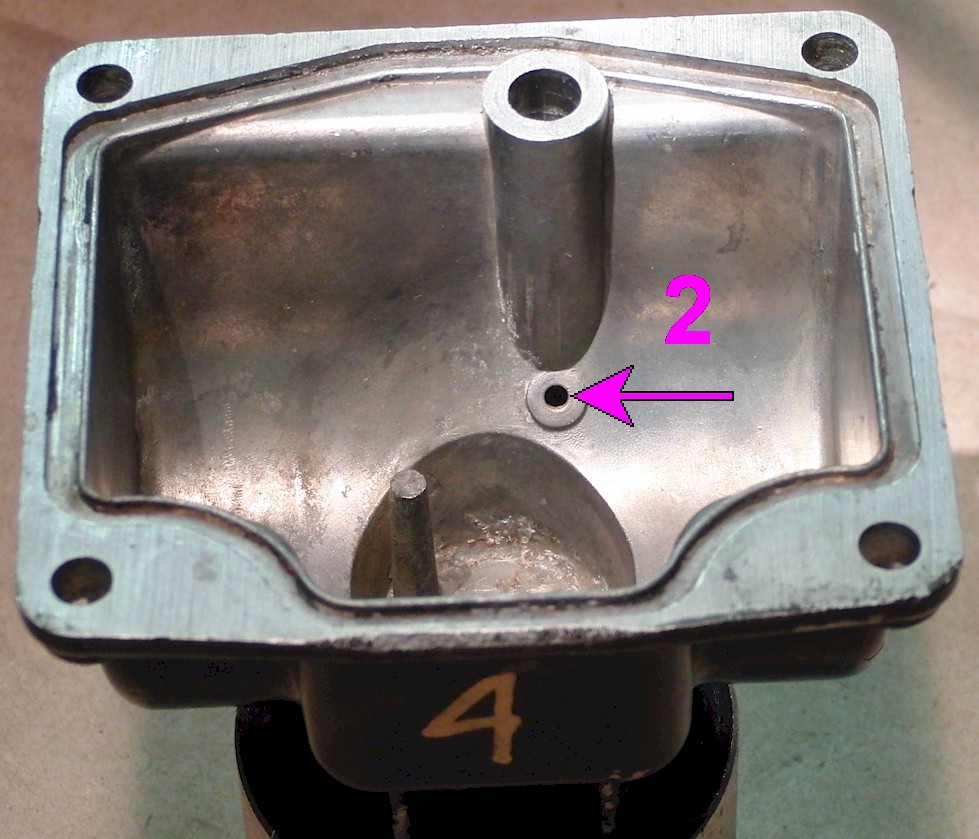
3 is the enricher fuel jet. It is permanently installed in the bowl at the bottom of the bleed pipe gallery for the enricher circuit. Because of its location, it can often get clogged with dirt, varnish, etc.
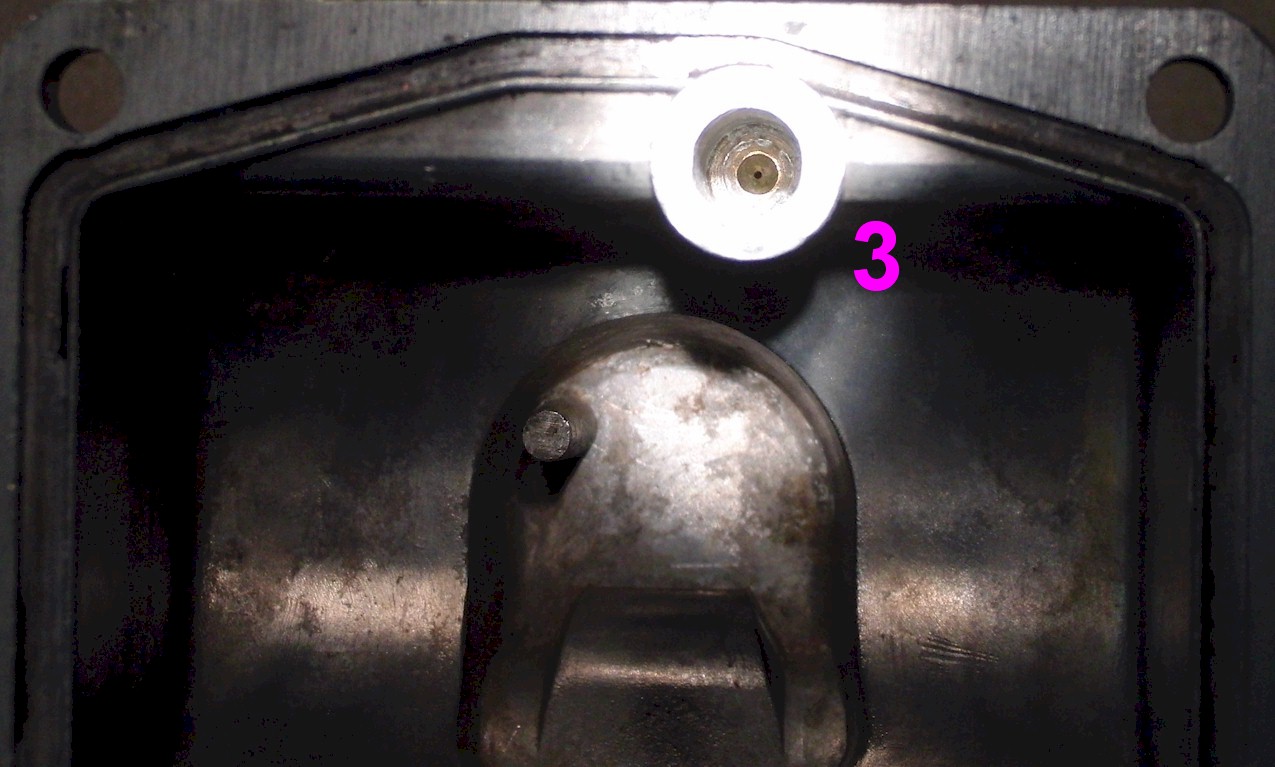
4 is the air inlet for the enricher bleed pipe gallery which is located inside the bowl casting. 5 is the enricher bleed pipe that is pressed into the body casting. When the bowl is installed, the pipe is inserted into the gallery, and an oring ensures the gallery is sealed. It is important to note that the air source for the enricher circuit's bleed pipe is inside the float bowl (above the bowl's fuel level) rather than under the slide-diaphragm where the other air jets are located. The bowl is vented to the outside atmosphere whereas the slide-diaphragm chamber is vented to the inside of the airbox, or if individual air filters are fitted, the chamber is vented to the inside of the air filter. However, the enricher circuit does get additional air from under the slide-diaphragm, as will be seen later.


After air enters the enricher fuel-stream in the bleed-pipe gallery, the air/fuel mixture travels upward toward the underside of the slide-diaphragm chamber. At the same time, air enters the underside of the slide-diaphragm chamber through large port A . Within the chamber, additional air enters the enricher air/fuel stream through port B . The opening of port B is controlled by the choke knob. Pulling the knob further out makes this opening larger. In this way, the speed of the idle can be controlled during choke activation. This also produces a vacuum under the diaphragm inhibiting the slide from moving upward when the throttle is opened. From port B , the enricher air/fuel mixture travels forward where it dumps into the carb outlet F , downstream of the throttle plate, and directly into the intake port of the engine.
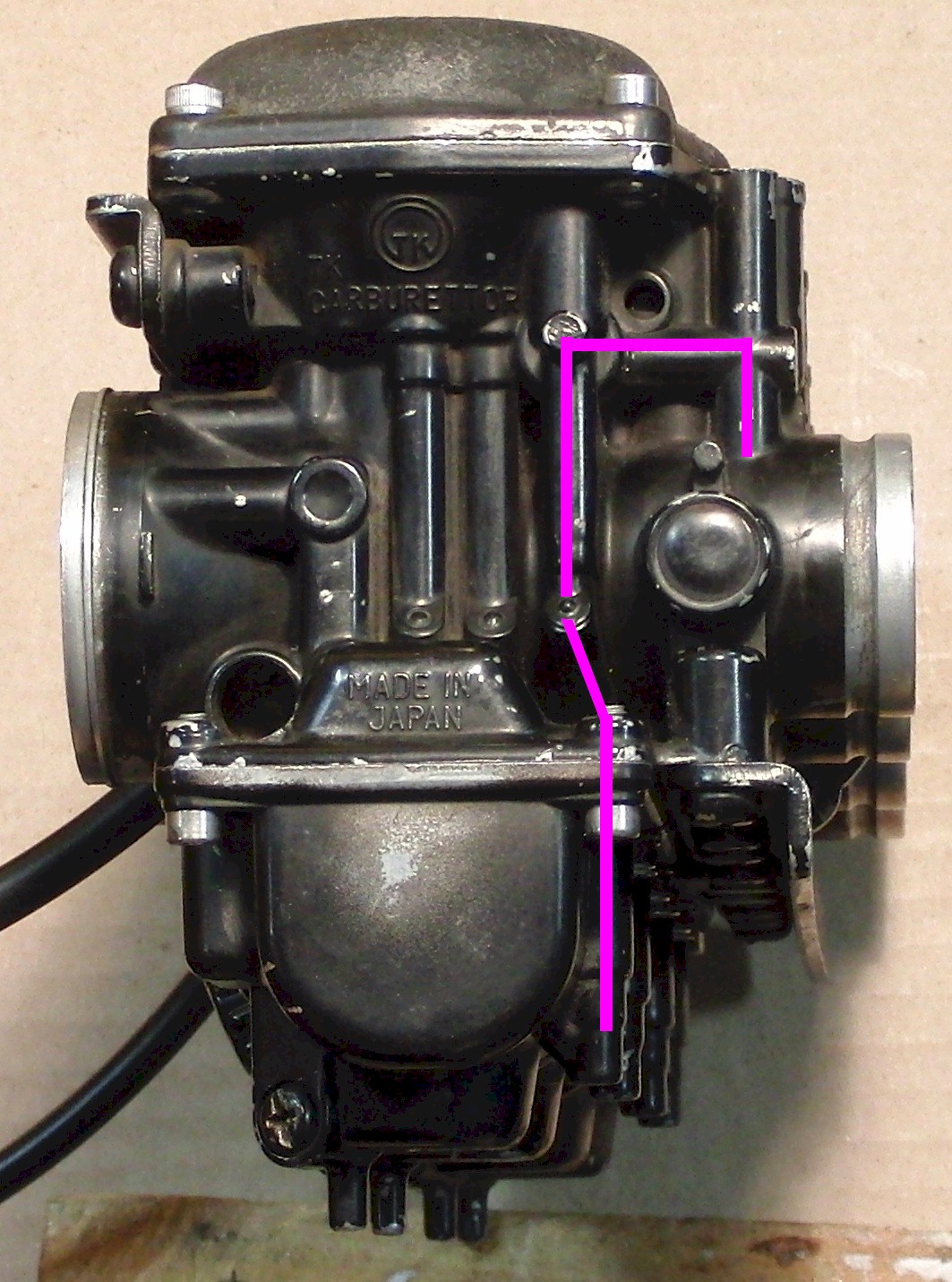
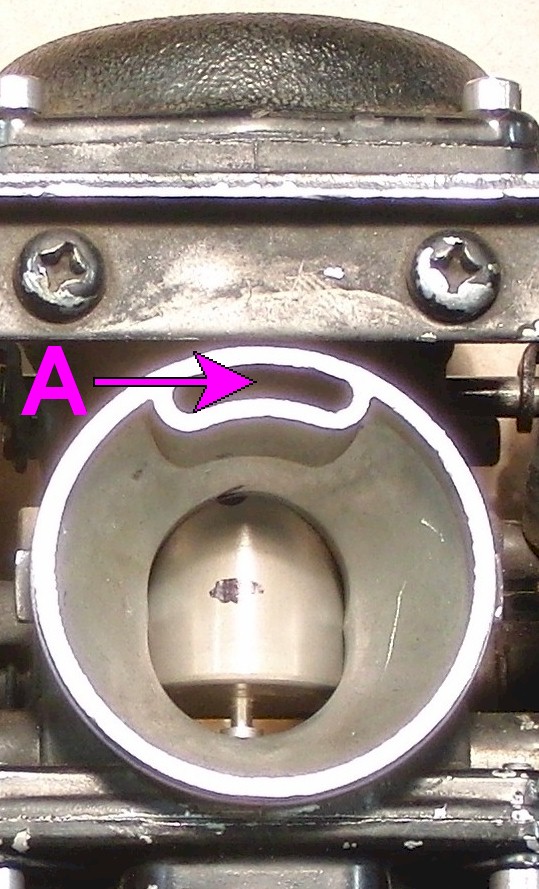


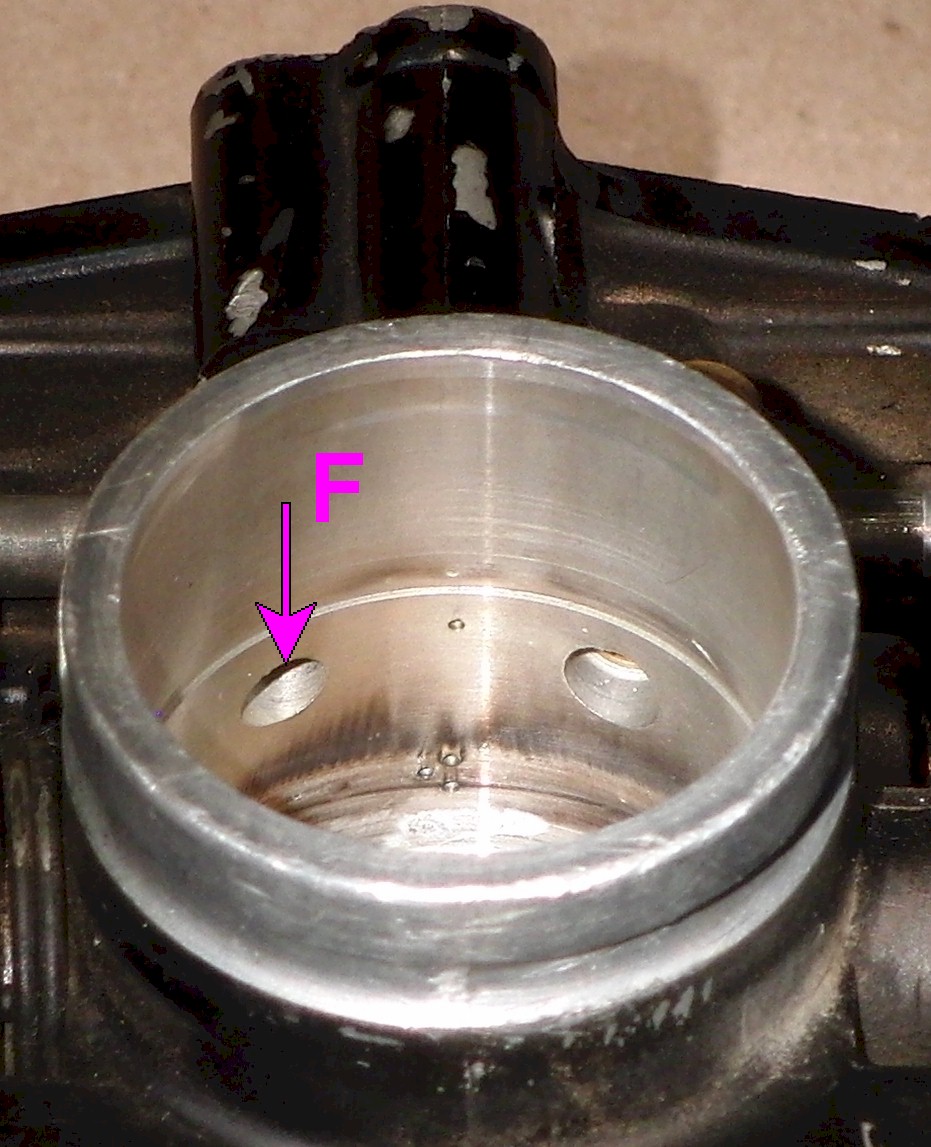
Port A , as mentioned above, provides the air to the chamber below the slide diaphragm. In addition to the enricher circuit, this chamber feeds the other various air jets. This chamber is at or near atmospheric pressure, or with an airbox, it's at airbox pressure. When the enircher is active, a port opens to apply some vacuum to the lower side of the diaphragm.
Port C , feeds air to the pilot circuit.
Port D , feeds air to the intermediate main circuit.
Port E , feeds air to the main circuit.

This path is how the air gets to the pilot jet.


On the later Tk26 carbs and the Tk27 carbs, the pilot jet is exposed to the fuel in the bowl. But in the 82/83 Gpz550 version of the Tk26 carbs, the pilot gallery is fed through a small passage, ( 6 ), in the wall leading to the intermediate gallery, which is fed by the intermediate main jet. Passage 6 is approximately 6 mm from the mouth of the pilot gallery. The pilot gallery is plugged by a plastic plug (with oring) to seal it from the fuel in the float bowl. On the other side wall of the intermediate gallery there is a brass plug revealing how passage 6 was created.
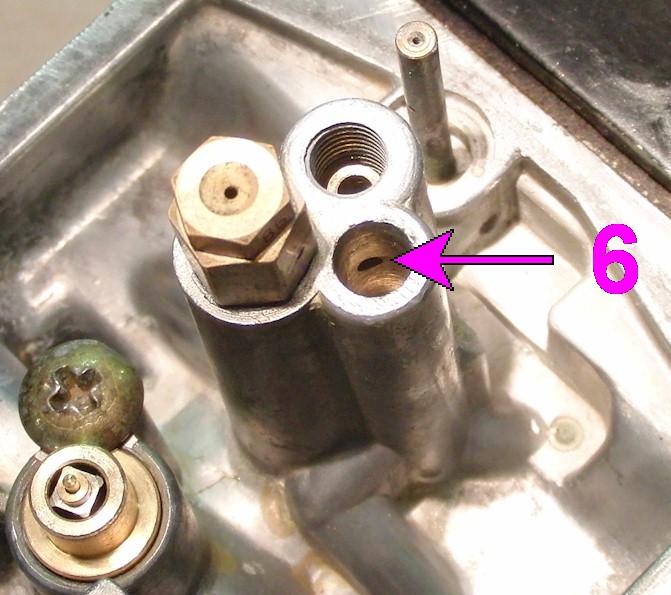

The air and fuel are mixed in the pilot jet's bleed pipe and the mixture then travels upward toward the top of the carb body.
These photos show the path the pilot mixture travels to get to the top of the carb.

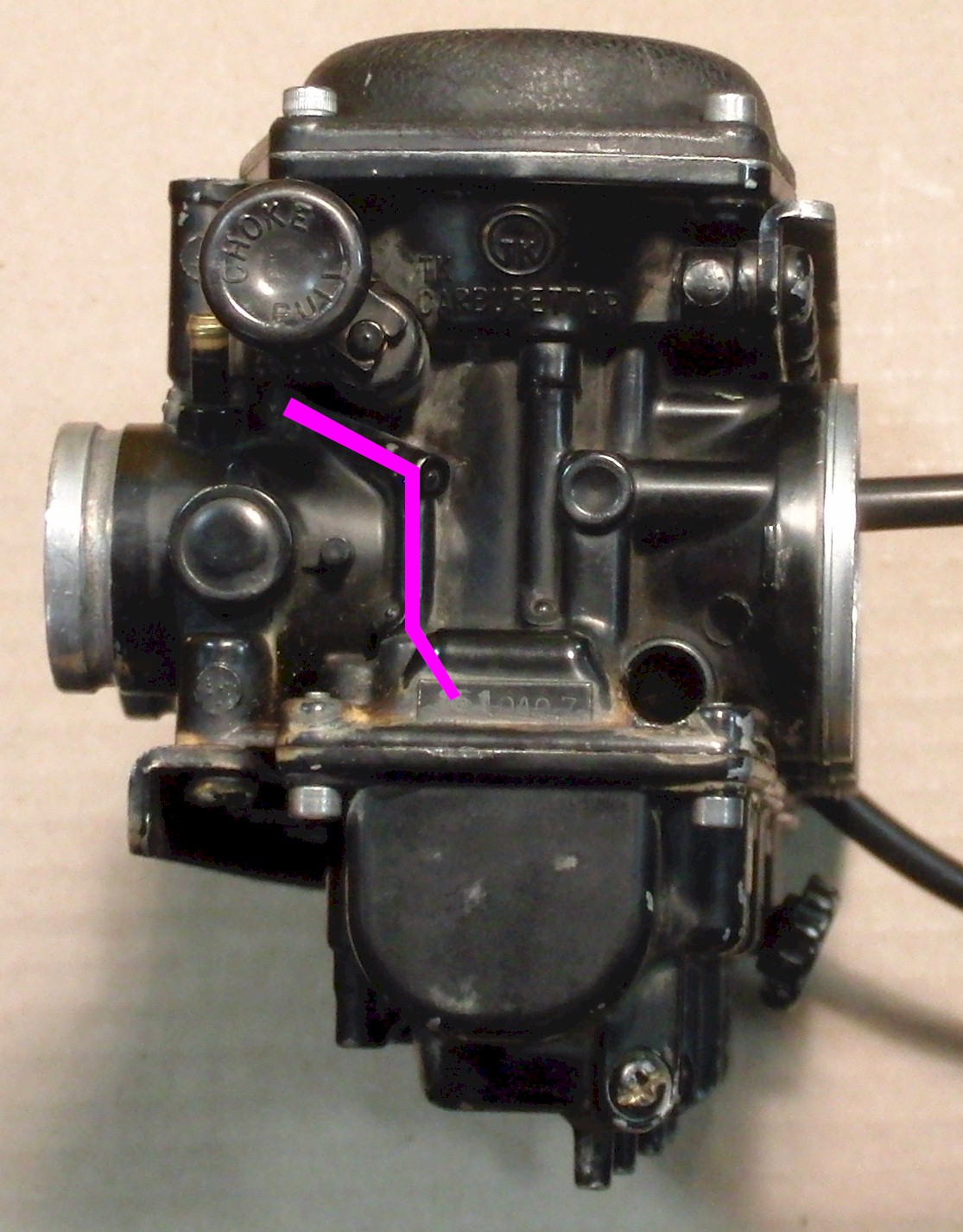
When the pilot air/fuel mixture gets to the top of the carb, it can enter the carb throat several ways.
First, if the throttle plate is open slightly, the mixture comes out of what are known as "timed" ports G . This is because they are synchronized to the opening of the throttle plate. Here, the throttle plate is being held open to show the timed ports labeled G . The multiple timed ports are plugged on the inside by one large plug which is partially obscured by the choke shaft bushing. If the throttle plate is closed all the way, there will be no vacuum to pull the pilot air/fuel mixture out of the timed ports, and the pilot mixture will exit through the mixture screw port H .
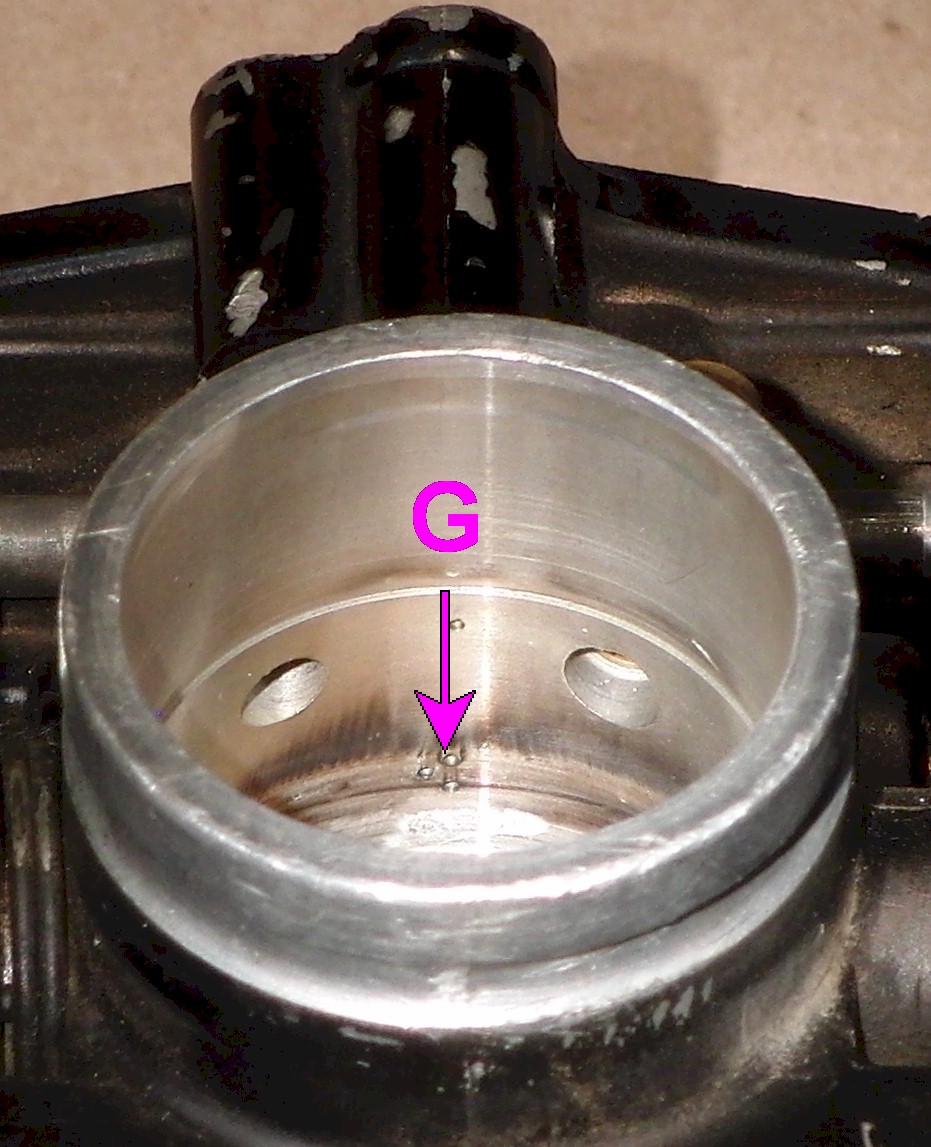

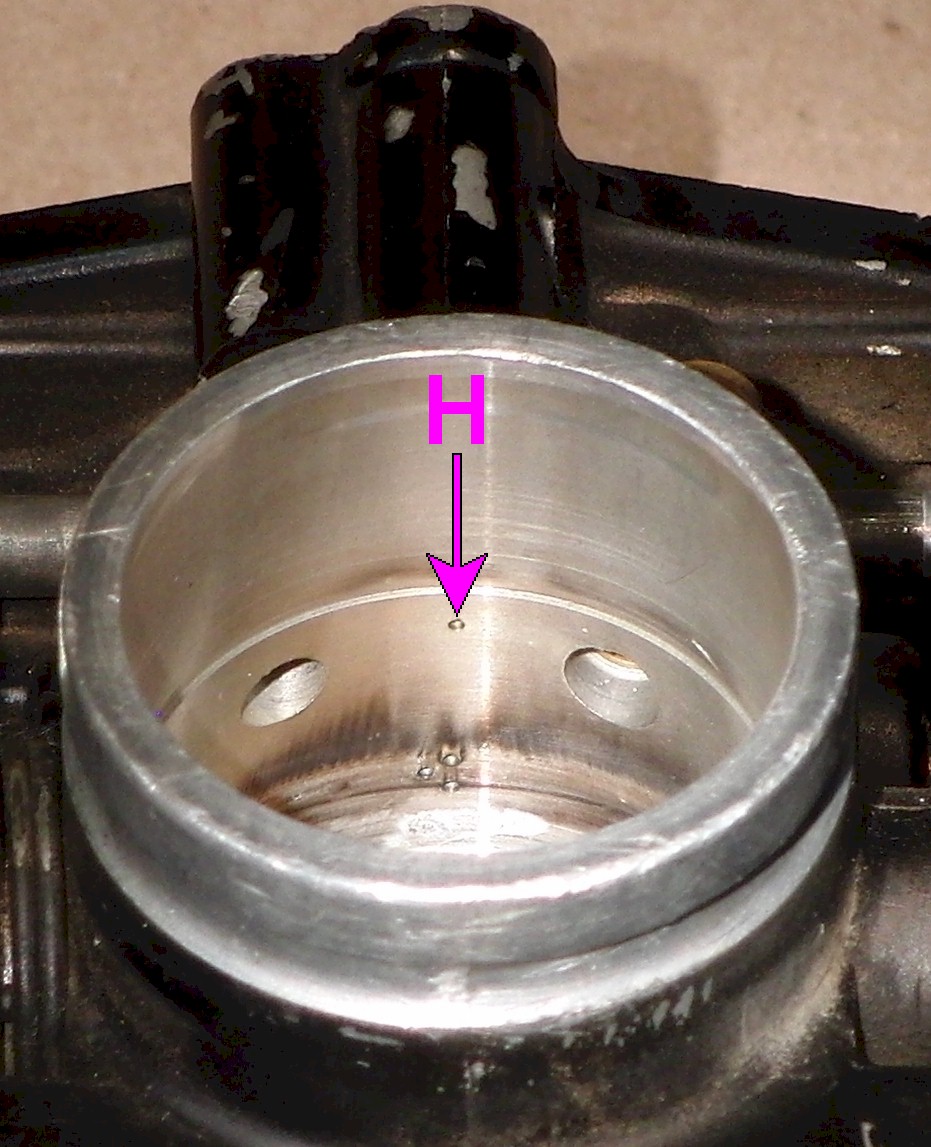
This path is how the air gets to the intermediate circuit.
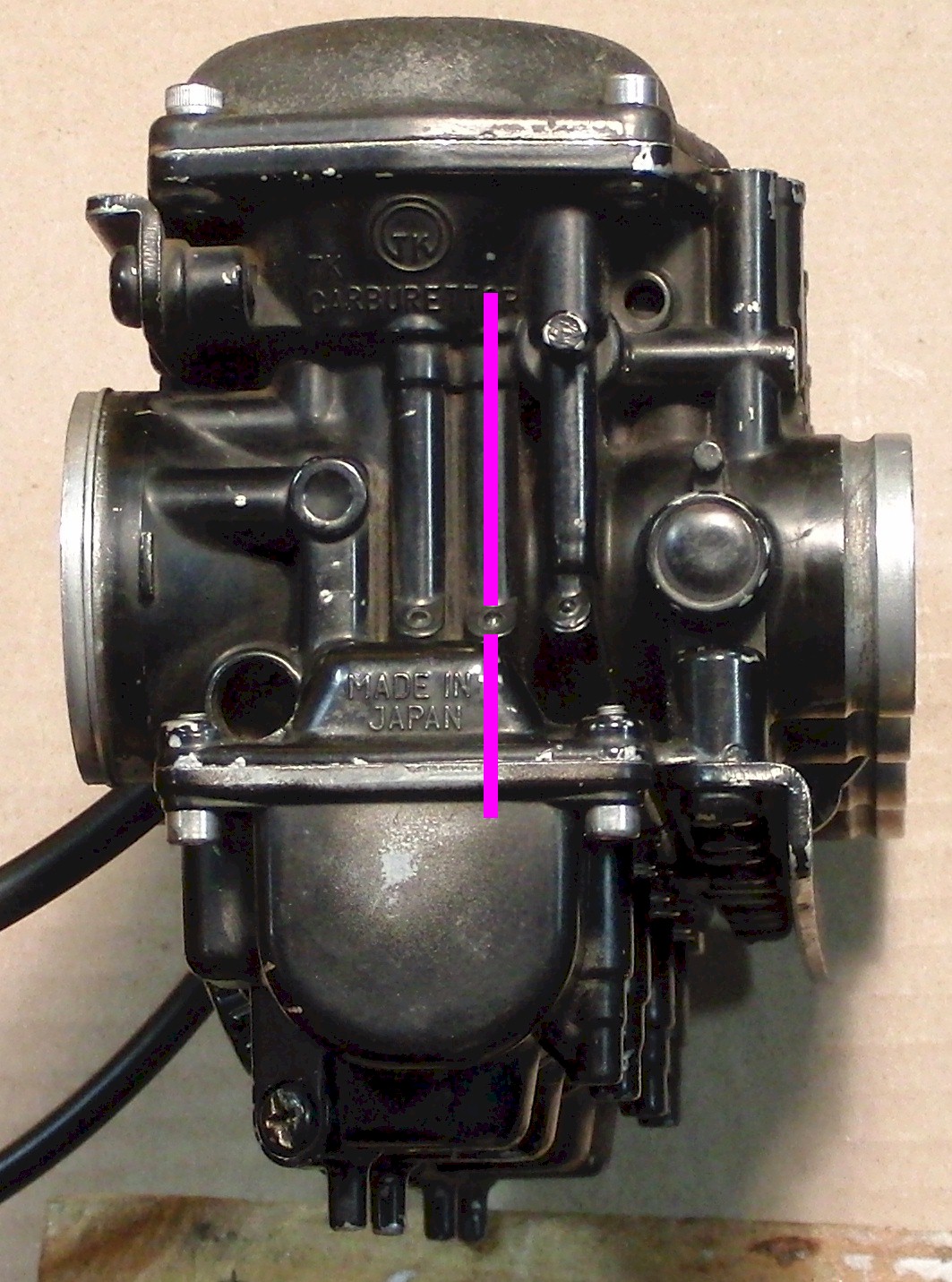

This path is how the air gets to the main circuit.
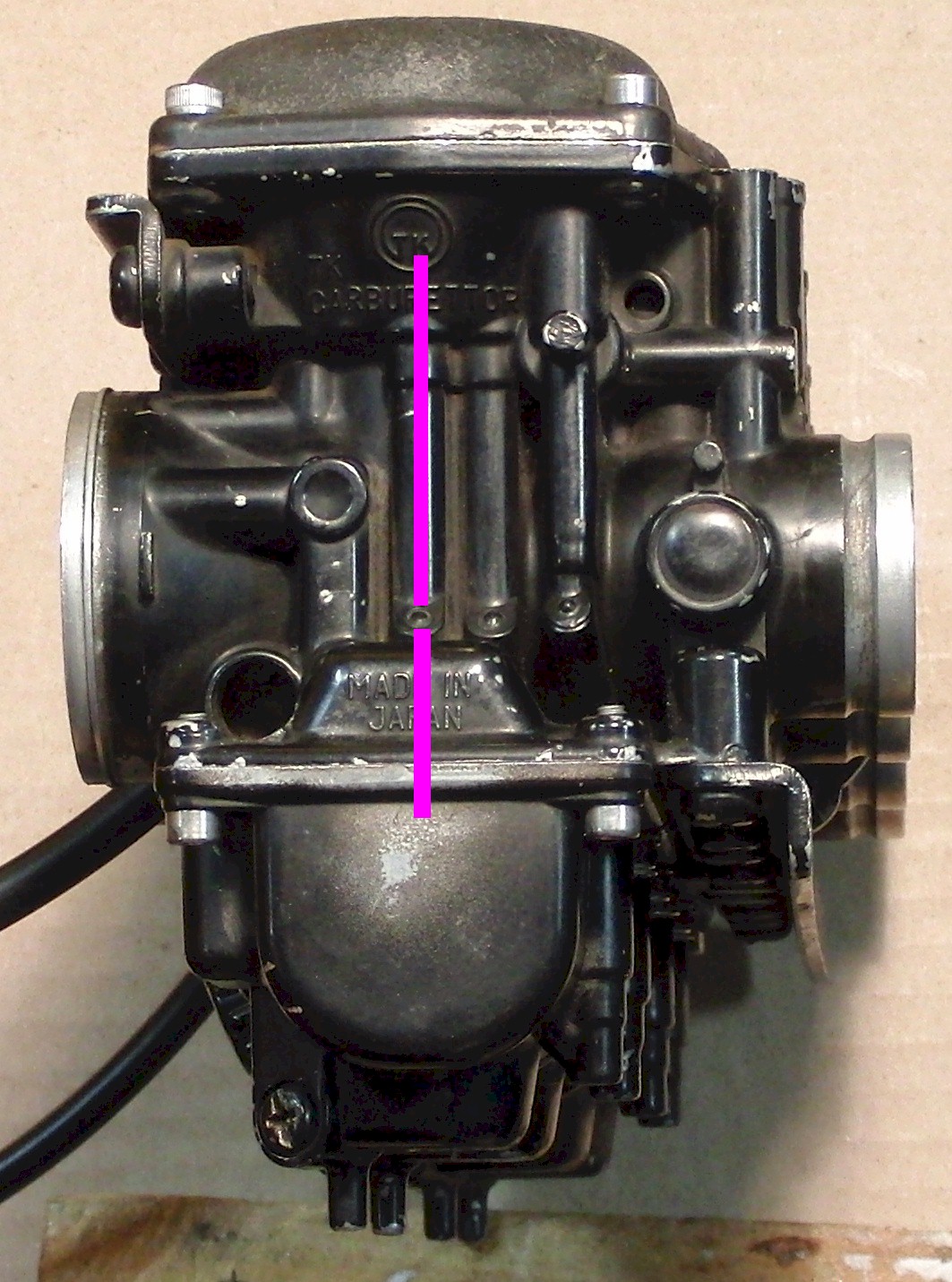
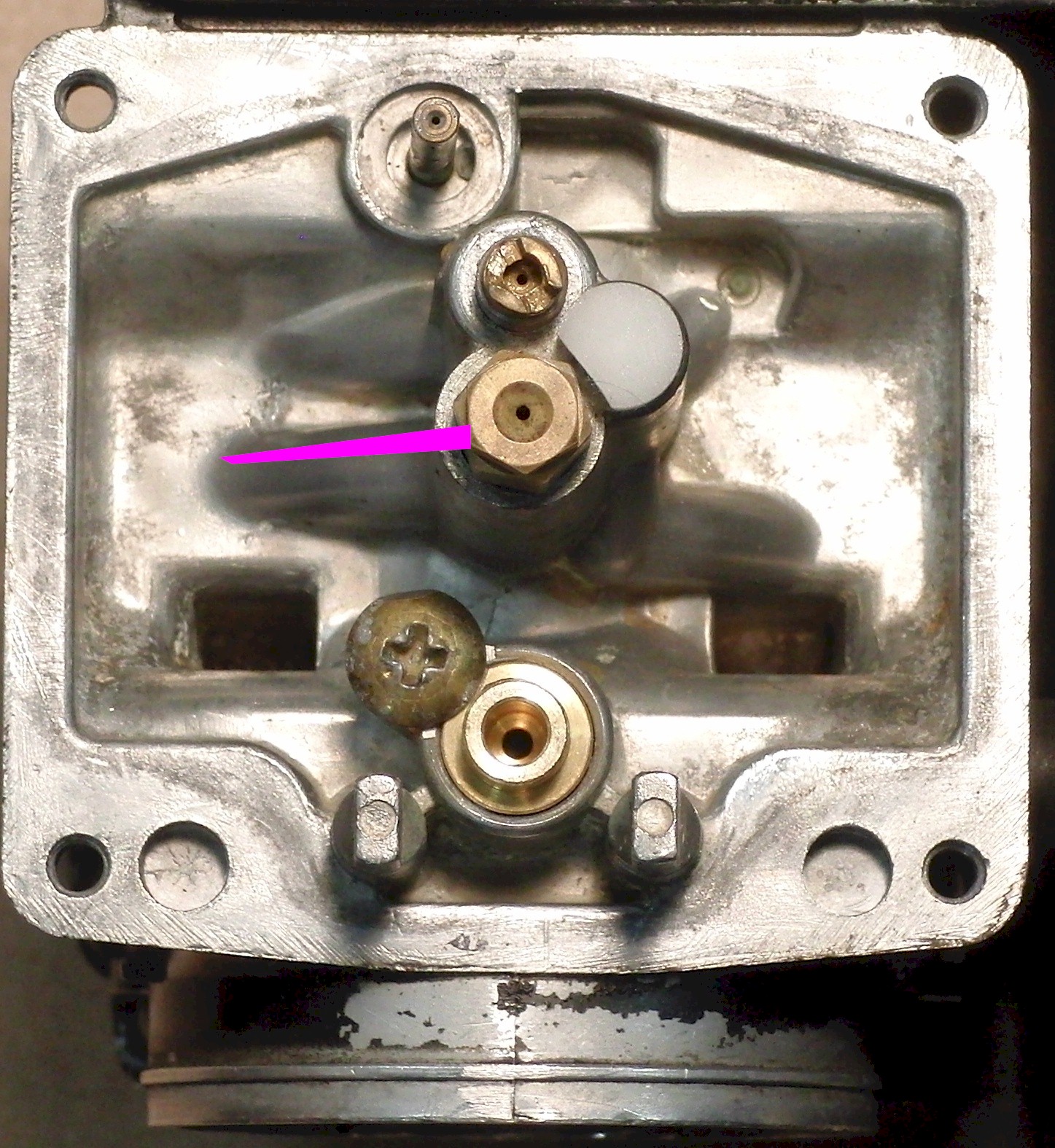
The air mixes with fuel from the bowl in each of the main circuits respective bleed pipes. The fuel comes directly from the bowl through the main and intermediate main jets. The air/fuel mixture from the intermediate circuit enters the carb throat through port I , which is actually the end of the intermediate bleed pipe protruding into the carb throat. The intermediate circuit has no mechanical metering device and works strictly with vacuum in the carb throat. The air/fuel mixture from the main circuit passes through the needle jet and then enters the carb throat at port J , which is actually the end of the needle jet protruding into the carb throat. The fuel in the needle jet is metered by the needle, which is controlled by the height of the slide.
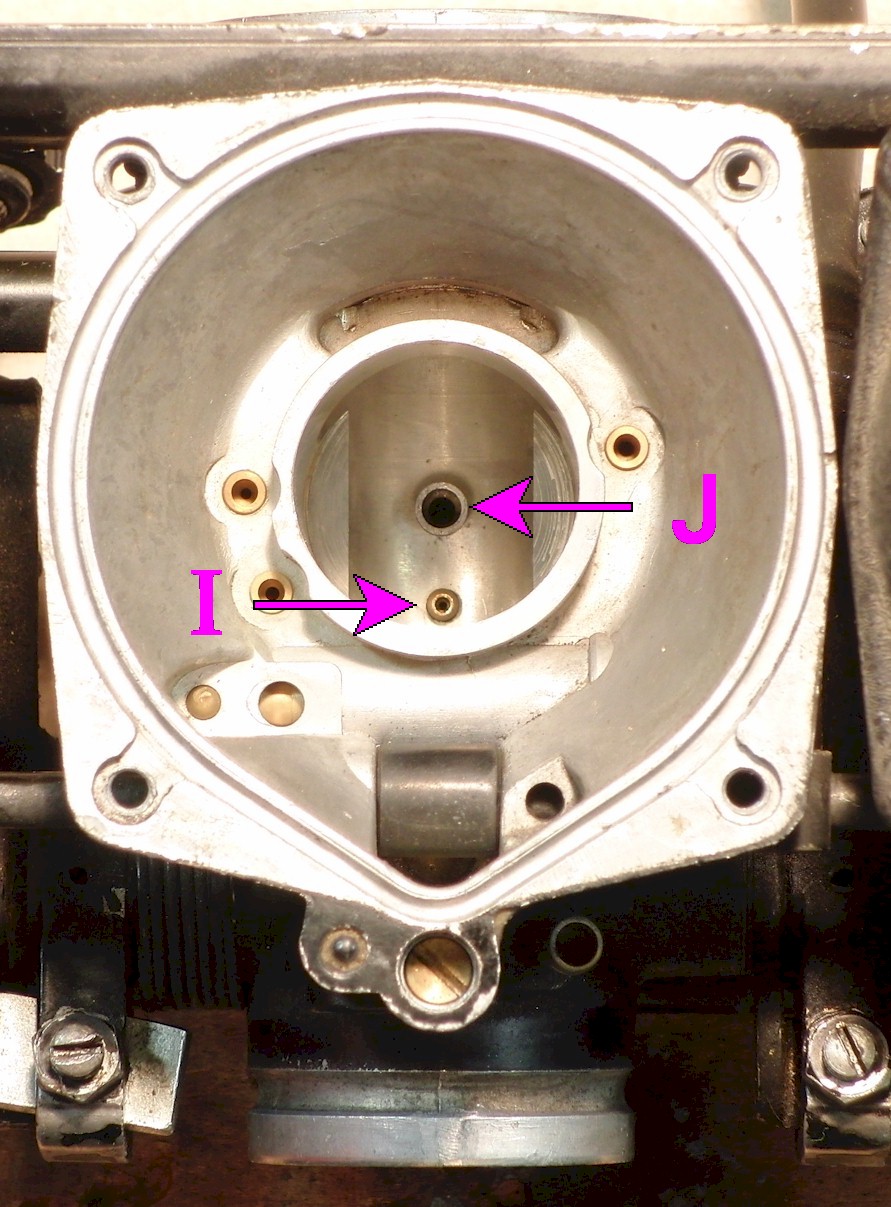
Each carb also has a manifold vacuum port. These ports are always at intake port vacuum levels. They are used to control the petcock and the passive-air-injection system. If not used, the pipe should be securely capped off.

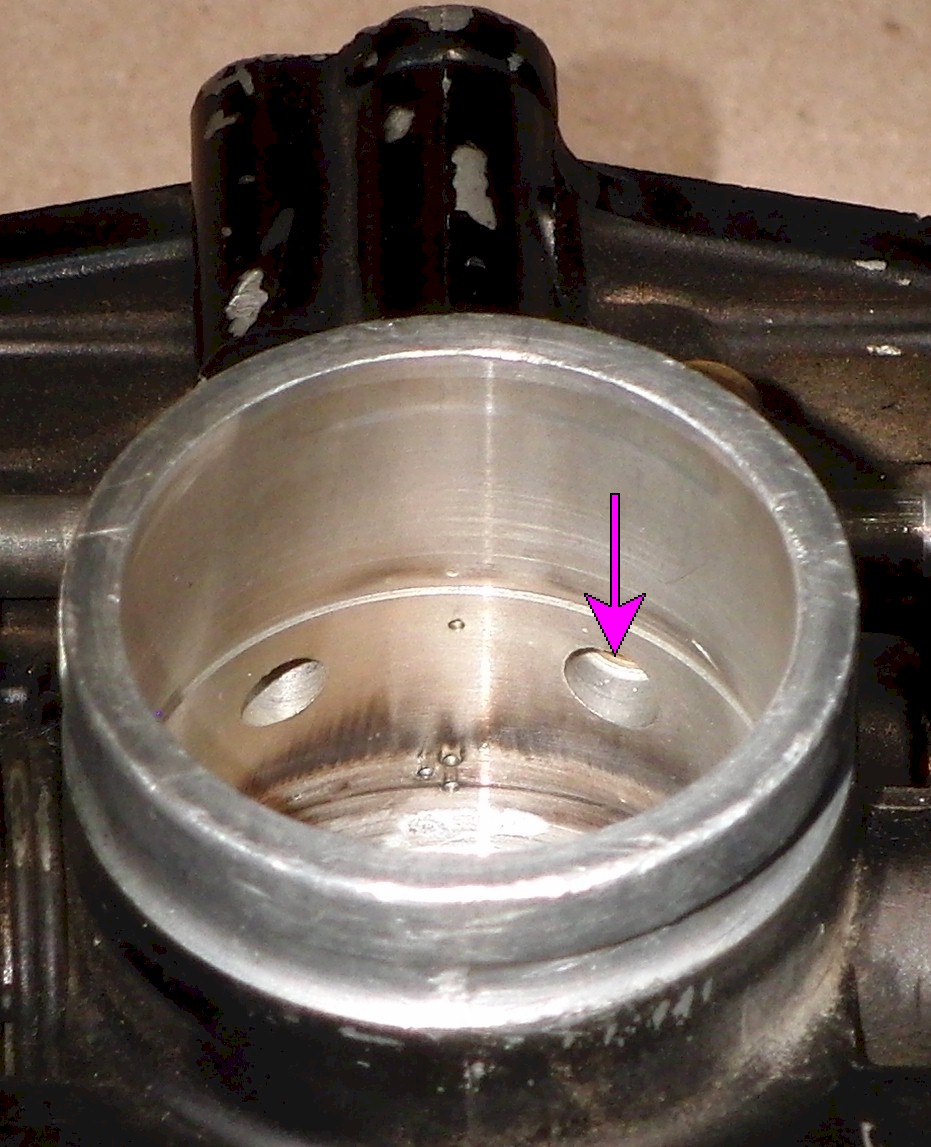
Inside the slide-diaphragm chamber on each carb is a port intersecting the choke rod. This port is not used for anything on carbs 1,2, and 4. But on carb #3, this port holds a small ball bearing and a spring. The ball falls into a detent on the choke rod to hold it in certain positions. The ball is critical to stop the enricher from activating due to vibration. The holds the rod in a position so that each enricher plunger is held closed with spring preload from the shaft. Without the ball and spring, the plungers may creep open. Check to make sure the choke rod "clicks" into position. If not, then the ball may be missing. If the choke rod is pulled out, the spring will propel the ball into the slide chamber where it may fall into port A and may ultimately end up getting sucked into the engine. It may also end up inside the airbox or air filter.
